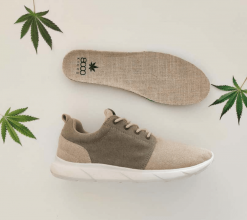The True Cost of Low-Wage Work
Working hard to earn a living wage is a reality for millions of people around the world, but unfortunately, it is still out of reach for many. A living wage is defined as a wage that allows a worker to meet their basic needs and have some discretionary income. Despite progress in getting suppliers to pay their workers their statutory entitlements, government-set minimum wages fall short of providing a living wage in many countries, including the United States. As a result, the vast majority of people who make the products we consume struggle to survive on wages that are barely enough to cover their daily subsistence needs.
Low-Wage Work in America
Despite the rapid expansion of the economy, the wages and benefits of most American workers have remained stagnant for decades. To understand the real impact of low wages, we read The Human Cost of Low Wages published by Ken Jacobs, Ian Eve Perry and Jenifer MacGillvary of the UC Berkeley Labor Center. This paper analyzes the current economic state of low-wage workers in the US, the impact of low-wage work on society as a whole and specific solutions to reverse the decline.
Key Takeaways:
- Low-wage work can result in hidden costs that are borne by the public, including increased reliance on government assistance programs and reduced tax revenue.
- Low wages can lead to poor health outcomes, increased absenteeism, and decreased productivity, which can result in additional costs for employers and the public.
- Raising the minimum wage and providing benefits like health care and paid leave can help reduce the hidden costs of low-wage work and improve economic outcomes for workers and society as a whole.
The Consequences of Low-Wages on US Workers in the US
“Roughly 60 percent of all workers in the bottom decile of wage earners (those paid less than $7.42 per hour) receive some form of government-provided assistance, either directly or through a family member.”
– Economic Policy Institute by David Cooper
- The median American worker’s real hourly wage was only 5% higher in 2013 than it was in 1979, while the wages of the bottom 10% of earners were 5% lower in 2013 than in 1979.
- Additionally, from 2003 to 2013, wage growth for the entire bottom 70% of the wage distribution was either flat or negative when adjusted for inflation.
- To compound the issue of stagnant wages, employer-provided health insurance has declined. The percentage of non-elderly Americans receiving insurance from an employer decreased from 67% in 2003 to 58.4% in 2013.
- Working families comprise nearly three-quarters (73%) of enrollees in major public support programs, and taxpayers carry a significant portion of the hidden costs of low-wage work in America.
This situation leaves low-wage workers unable to make ends meet, and the federal and state governments finance the public assistance programs that many of these workers and their families turn to.
Impact of Low Wages on Taxpayers
The Human Cost of Low Wages examines the cost to the 50 states of public assistance programs for working families, including Medicaid, the Children’s Health Insurance Program (CHIP), and the Temporary Aid to Needy Families (TANF) program. The goal of the research is to figure out how much low wage working families rely on public assistance programs, even when they work full time jobs.
- The findings reveal that many families who work full time jobs don’t have enough money to pay for important things like healthcare and food.
- The families in this study work in a wide array of jobs, from fast food workers, child care providers, home care workers, to college faculty.
- These families get help through programs like Medicaid and food stamps, which ends up costing American taxpayers more than $150 billion every year.
Solutions to the Problem
The Human Cost of Low Wages proposes several solutions that policymakers can implement to address this issue.
1 – Raise the minimum wage
Raising the federal minimum wage, which has remained at $7.25 per hour since 2009, would increase low-wage workers’ earnings and reduce their reliance on public assistance programs. It’s also important to make sure that the minimum wage keeps up with the cost of living, so people can always afford basic necessities.
2 – Expand access to affordable healthcare
Policymakers can expand access to affordable health insurance, especially for low-wage workers who do not receive coverage from their employers. This can be achieved through policies such as Medicaid expansion or the creation of a public option. Providing affordable health insurance to more workers would reduce the burden on public assistance programs and enable workers to access medical care without worrying about the cost.
3 – Expand social safety net
Policymakers can strengthen the social safety net by increasing funding for programs like TANF and SNAP, which provide cash and food assistance to low-income families. These programs have proven effective at reducing poverty and improving health outcomes, but they are underfunded and have strict eligibility requirements that exclude many families in need.
4 – Improve employment options
Policymakers can support initiatives to improve job quality and security for low-wage workers. This includes increasing access to paid sick leave, paid family leave, and affordable child care, which would help workers balance their responsibilities and reduce the risk of poverty. Policies like the Employee Free Choice Act could also help improve job quality and reduce the need for public assistance programs by making it easier for workers to unionize and negotiate for better working conditions.
The Benefits of a Living Wage
A living wage is essential because it enables workers to meet their basic needs without having to work excessive overtime hours or multiple jobs, become bonded laborers, or put their children into work instead of school. Workers on living wages are likely to be more productive, less likely to leave, and healthier, which reduces loss of working hours due to sickness. Additionally, brand reputation is enhanced when customers are aware of the working conditions of those who make the products they buy.
Final Thoughts
The challenge of achieving a living wage is urgent, and stakeholders from various industries are taking an interest in the issue, including consumers, the media, and workers themselves. The past few years have seen a rise in awareness and a number of valuable new reports on the issue. Wages in many global supply chains have come under pressure, and workers are making dramatic efforts to have their voices heard in demanding better wages.
The challenge of achieving a living wage is urgent, and stakeholders from various industries are taking an interest in the issue, including consumers, the media, and workers themselves. The past few years have seen a rise in awareness and a number of valuable new reports on the issue. Wages in many global supply chains have come under pressure, and workers are making dramatic efforts to have their voices heard in demanding better wages.
Fair Trade Finder makes product and service recommendations, based on thorough research and comparison analysis. Read more.
Campgrounds
- The Best Beach Camping in California
- The Best Campgrounds in Northern California
- The Best Wilderness Camping in California
- The Best Campsites in Washington
- 10 Best Campgrounds in Southern California
- The Best Campsites in Oregon
Backpacking
- The Best Yosemite Backpacking Trails
- The Ultimate Guide to Backpacking
- Best Backpacking in Colorado
- The Best California Backpacking Trips
- The Best Backpacking In Washington
- Best Backpacking Trails in the US
Footwear
- 20+ of the Best Vegan Sneaker Brands
- The Best Vegan Sandals Brands
- Sustainable Hiking Shoes Made From Recycled Materials







